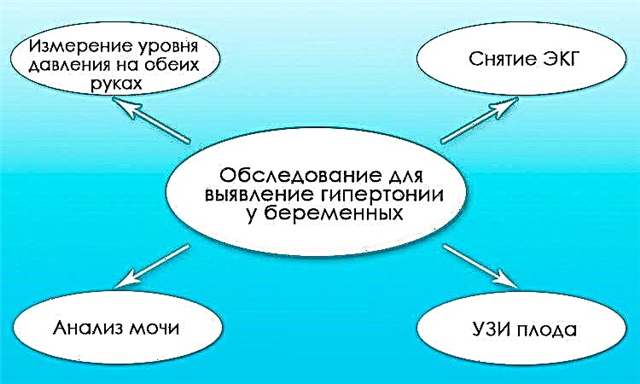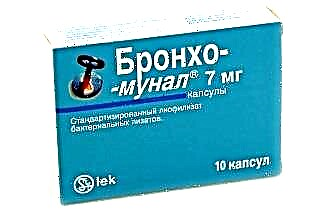Allergic rhinitis in a child differs significantly from other types of rhinitis in terms of clinical manifestations and causes of development. At the same time, the symptoms of the disease in infants and older children are almost identical. It should be noted that allergies in young patients under 3-4 years of age are quite rare. Allergists believe that this is due to the absence (yet) of a malfunction of the immune system.
 Allergic rhinitis is a danger to preschool children. With the development of inflammation in the nasopharynx, the mucous membranes swell so much that the patency of the airways decreases.
Allergic rhinitis is a danger to preschool children. With the development of inflammation in the nasopharynx, the mucous membranes swell so much that the patency of the airways decreases.
In this regard, the baby has difficulty breathing, the skin turns pale, the temperature regime changes, etc.
If a child is not diagnosed with a disease in time, this will lead to very disastrous consequences in the future.
Some statistics
Statistics show that in most CIS countries, the prevalence of allergies among children reaches 50%, and half of them develop bronchial asthma due to inadequate treatment. As practice shows, the disease is more common in boys than in girls. Allergists have not yet figured out what this is connected with.
Among all types of allergic diseases, rhinitis occupies a leading position in terms of prevalence. The share of allergic rhinitis accounts for more than 65% of allergic manifestations in children. Up to 4 years of age, it manifests itself quite rarely, but with the beginning of visiting public places (kindergartens, sports clubs), the incidence rate is steadily increasing.
At the age of 4 years, every 3 children suffer from allergies, while in 40% of cases it is allergic rhinitis that is diagnosed.
As a rule, allergies in children go away quickly after elimination of the provoking agents. However, poor ecology, poor-quality food and stress over time affect the severity of the disease. A few years after the manifestation of signs of an allergic disease, children first come to an appointment with an allergist. During this time, the disease progresses greatly and becomes chronic. In this regard, it is not always possible to prevent the development of complications (bronchial asthma, otitis media, polyps).
Causes
Allergic rhinitis in children can be characterized as a disease of the nasopharynx, accompanied by inflammation of the mucous membrane. Pathological processes in the respiratory tract stimulate the secretion of mucus, in this regard, babies have transparent watery discharge from the nose. A runny nose occurs immediately after contact of the respiratory system with allergens - dust, drugs, gases, animal hair, etc. Constant itching in the nose, sneezing and runny nose negatively affect the child's behavior - he becomes whiny and restless, does not sleep well and refuses to eat.
Regardless of the age of the small patient, an allergic reaction can be triggered by the following allergens:
- food - canned vegetables and fruits, wild berries, citrus fruits, legumes, confectionery, smoked sausages;
- household - fumes from household chemicals, decorative cosmetics, dust, washing powder, wool, synthetic fabric;
- medication - antibacterial and hormonal drugs;
- vegetable - pollen of juniper, alder, nettle, birch, wheat, mustard;
- fungal - spores of yeast-like and mold fungi;
- microbial - streptococci, pneumococci, staphylococci, etc.
 According to the results of the study, the first symptoms of the disease appear within a minute after contact with the provoking agent. Allergens are very quickly absorbed into the nasopharynx and cause inflammation.
According to the results of the study, the first symptoms of the disease appear within a minute after contact with the provoking agent. Allergens are very quickly absorbed into the nasopharynx and cause inflammation.
If the cause of the allergy is identified and eliminated in time, the manifestations of the disease will subside within a few days.
Provoking factors
There are a number of predisposing factors that increase the risk of developing an allergic rhinitis. Some of them can be eliminated in advance, others cannot. In any case, it is simply necessary to know them "by sight", because some provocateurs can become the direct cause of an allergic reaction in the ENT organs:
- poor environmental situation;

- hereditary predisposition;
- disruptions in metabolic processes;
- frequent development of colds;
- abnormal structure of the nasal septum;
- high blood clotting;
- disruptions in the functioning of the gastrointestinal tract;
- hormonal imbalance;
- neurological disorders;
- adenoids and chronic rhinitis.
Allergic rhinitis in a child may occur in connection with surgery. In particular, after adenotomy, i.e. removal of adenoids, negative changes occur in the immune system, which can cause the development of allergic rhinitis. Moreover, it is not always possible to immediately stop undesirable reactions in the nasopharynx. Because of this, the bronchi are often involved in inflammation, which subsequently leads to the development of bronchial asthma.
Allergic rhinitis in infants
As already mentioned, allergic rhinitis in children under 3-4 years of age is very rare. In most cases, the disease is triggered by household allergens, i.e. dust mites, tobacco smoke, strong smell of perfumes or household chemicals. With a hereditary predisposition, rhinitis occurs in the first few months immediately after birth. If one of the allergic parents cannot stand the smell of powder or fabric softener, chances are, your baby will have the same intolerance.
Very often, babies are allergic to complementary foods, starting from 6-8 months. The foods that are most often responsible for the development of the disease include:
- semolina;
- milk mixtures;
- cow's milk;
- bananas;
- egg white;
- yoghurts with fillers.
Important! Symptoms of infectious and allergic rhinitis in infants are almost identical, but their treatment involves the use of various medications.
If you are not sure that a common cold became the cause of the common cold, it is better to show the baby to the pediatrician. When the diagnosis is confirmed, he will prescribe gentle antihistamines that will help stop unpleasant allergy symptoms.
Rhinitis in children from 3 years old
Preschool children are much more likely to encounter allergic diseases than infants. This is largely due to the significant expansion of the range of provoking factors that are found in kindergarten, on the street, at school, sports clubs, etc. According to doctors, undesirable reactions can be provoked:
- new food products;
- plant pollen;
- library dust;
- synthetic materials.
Psychoemotional factors play an important role in the mechanism of allergy development. Going to kindergarten and school is stress for the child, which negatively affects the functioning of the nervous and, as a result, the endocrine system.
Banal excitement and fear can provoke the development of an allergic rhinitis. That is why, before each new stage that the child has to go through in life, you need to try to conduct explanatory and supportive conversations with him.
How to recognize a disease?
In fact, inexperienced parents quite often mistake an allergic rhinitis for signs of a cold. This is not surprising, because the symptoms of SARS and allergies are very similar to each other. However, there are some very important differences between allergic rhinitis and respiratory disease. Young parents should be alerted by:
- regular sneezing;
- watery nasal discharge;
- darkening around the eyes;
- swelling of the face;
- redness of the eyes;
- lack of fever;
- tearing.
It is very important to establish the true cause of the development of allergies, as well as its dependence on the season. If rhinorrhea occurs in spring during the flowering periods of wind-pollinated trees and plants, most likely the child suffers from hay fever, i.e. seasonal allergic rhinitis. If rhinitis occurs not only in summer, but also in winter, perhaps the reason lies in the development of year-round allergic rhinitis. In any case, the detection of the above symptoms is a good reason for seeking help from an allergist.
Preventive measures
Prevention measures for allergic rhinitis are about taking care of the baby's immunity before and after birth. To reduce the likelihood of developing the disease in the future, it is desirable:
- follow a hypoallergenic diet during pregnancy;
- stop smoking and drinking alcohol;
- regularly ventilate the room and do wet cleaning;
- include in the diet foods rich in vitamins;
- deal with air pollution using an air conditioner with a special filter.
Already after the birth of a child, you need to ensure that dust does not accumulate in the nursery.
During the absence of the baby in the house, it is advisable to ventilate the room and wipe the dust at least once every 2 days. In addition, bed linen and towels need to be changed every 3-4 days. Do not allow passive smoking of the child and his contact with chlorine and whiteness fumes. When washing clothes, use only special hypoallergenic powders and conditioners that do not have a strong odor.




